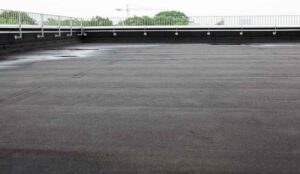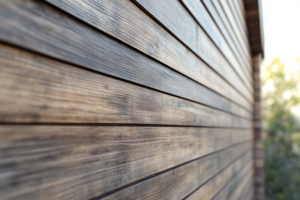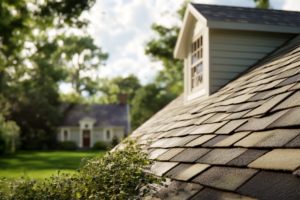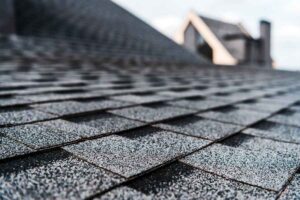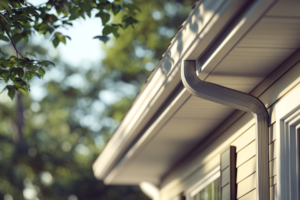Cleaning and examining your roof is necessary for your home’s exterior maintenance and should be done each year. The elements, especially in the fall and winter months, can take a toll on your roof, exterior walls, and gutters. Still, with regular maintenance, you can help extend the lifespan of your roof by following this checklist.

Clean Off Debris
The elements – especially from the fall and winter seasons, tree branches, bird droppings, dirt, moss, and mildew can all harm the roof of your house. To help ensure the debris doesn’t weaken the integrity of your roof, be sure to clean it all off thoroughly.
Check for Mold and Mildew
While looking over your roof, keep an eye out for signs of mold or mildew. If your roof has a lot of debris, you have mold and mildew growing on it. However, it’s typically an easy fix if caught early without causing significant problems. Also, look for discolored streaks on your roof, indicating growth.
As mold and mildew progress, they seep into the foundation and cause more problems. Mold and mildew can spread to the interior of your home and are dangerous not only to your health but also to the health of your roof. Inspect for any signs of mold or mildew during your spring cleaning routine.
If you see that mold has covered a large roof area, reach out to the 22nd Century Roofing team for a more thorough inspection.
Look Over and Clean Your Gutter System
A functioning gutter system will protect your home from water damage by directing water away from the roof and channeling it away from your home. However, water can back up and damage the roof, fascia, soffits, and siding when the gutters and downspouts are clogged. If rainwater isn’t flowing correctly through your gutter system backs up, and overflows will occur, meaning the system will need a thorough cleaning and possibly repairs.
While inspecting your gutter system, keep an eye out for these six common spring gutter system problems.
Trim Nearby Tree Branches
Not only should you clean off your roof when spring arrives, but you should also clean out your gutter system and trim nearby trees hanging over and near your roof. By trimming branches, you can help to reduce the amount of debris that can build up in the gutter system and potential unwanted damage to the roof. However, the best and most effective option to keep your system clear and work properly is to have gutter guards installed.
Examine Flashing and Chimney
When examining your chimney and the flashing around it, look for flashing that might have pulled away from the chimney or roof. Flashing that has pulled away can create small holes, creating an opening for water and bugs to enter. If you are unsure if there is damage to this area of your roof, schedule a professional inspection to prevent further and potentially more costly damage.
Inspect Your Attic
The attic is an important place to inspect, as well as water that may have seeped through or the presence of condensation can cause the wood structure to rot. And, if left.
Water can leak into your home or attic, and condensation can cause rooting wood. If left untended, it can be a breeding ground for mold or mildew.
Check your ceiling and attic for signs of water damage or mold. Mold in your attic is generally due to either an insulation or ventilation issue if no roof leaking has occurred. If you notice any mold or mildew growth, it is crucial to call a professional for an inspection, as they will be able to pinpoint the exact cause of the damage and make repairs before the issue worsens.
It’s also possible that bugs or critters have found their way into your home during the colder months, so be sure to also look for possible signs of infestations.
Look for Signs of Damage
While looking for signs of damage, look for broken, missing, curling, blistering, buckling, and stained shingles, as these all can create more significant issues if unnoticed or left to worsen. In addition, look for heavy branches that may have been frozen and fallen during the winter, rotting, or other signs of damage.
Spring is the perfect time to repair any missing or loose shingles and call a professional to conduct a thorough inspection. If you see something that looks like it needs attention soon, reach out to our team right away to assess and repair the potential damage.
Evaluate General Wear and Tear
General wear and tear occurs naturally over time but to ensure you are performing proper maintenance and helping to prolong the lifespan of your roof, it is essential to watch the progression of that wear and tear – and have repairs made as needed. Whether there are large areas of rust on your gutters or areas of your roof that seem to be sagging, general wear and tear are usually easy to spot.
Keep in mind that while you may have covered all of your bases, untrained eyes often overlook things. There is the possibility that your roof has damage that can’t be seen. Small details can be hard to notice if you are unsure what exactly to be looking for. Because of this, it is a good idea to schedule a professional inspection to be sure nothing is missed and that you can enter the spring and summer seasons with peace of mind that your home’s roof is safe, functioning accurately, and in its best shape.

